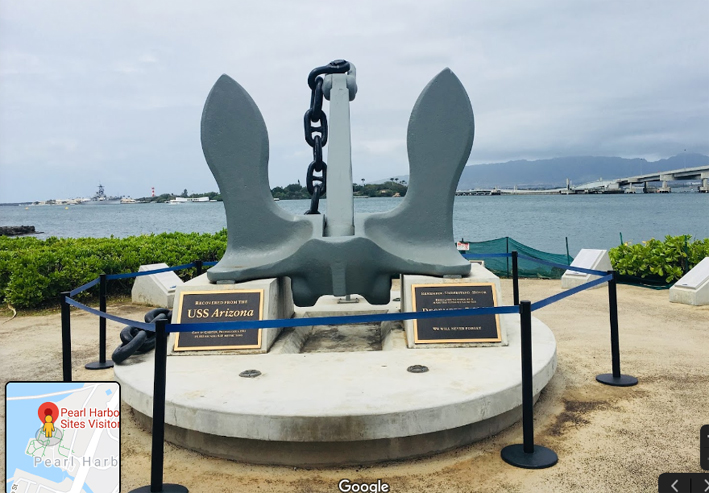Table of Contents.
Attack on Pearl Harbor, 1941.
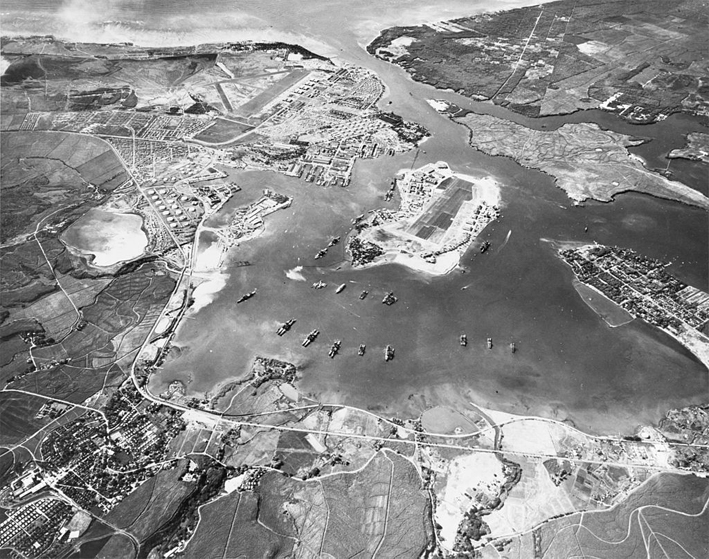
Pearl Harbor looking from the southwest. The inlet
to the "pearl" is visible at the top in the
middle. The port is located on Honolulu which is part of the Hawaii archipelago.
Photo shot in October, 1941.
Coordinates: 21°22′1.54″N, 157°56′18.86″W
By 1940, World War II had begun on several fronts. By
September 1940, Japan had joined the Axis Powers (Germany, Italy).
Their counterpart were the Allies (Britain,
France and the Soviet Union). It made the United States reconsider its
positions. It was clear that sooner or later a confrontation with Japan
would be inevitable. The United States was initially bound by a decision
in the US Congress which meant that the country
would remain neutral. Opinion polls showed that there was a clear
majority opposed to US entry into the war
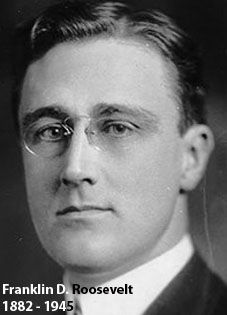

Franklin D. Roosevelt
James Roosevelt
(1882 - 1945)
(1828 - 1900)
However, incumbent President Franklin D.
Roosevelt (Democrats) felt compelled to support Britain in the
ongoing transatlantic war. For example, considerable resources were
allocated to support the merchant ships that went on convoy between
England and the United States. Roosevelt's administration did not regard
this interference as an act of war and thus not a violation of
neutrality.
The United States had its base for the Pacific Fleet in
San Diego, California. By mid-1940, Roosevelt had decided to move it to
Pearl Harbor. The aim was to deter Japan from waging war in East Asia.
British colonies in Southeast Asia, such as Singapore, were at risk.
Another purpose was to compensate for the resources taken by the efforts
on the Atlantic. The Pacific Fleet came closer to the supposed conflict
zones. The United States judged that the resources in the Pacific Ocean
were sufficient.
By the summer of 1940, Britain had occupied Iceland. The
aim was to get a strategically important naval base in the Atlantic. In
July 1941, Roosevelt decided that the United States should join the
British on Iceland. They established their own naval base there. US
destroyers and aircraft helped the British in the hunt for German
submarines. When the position of the Germans was identified, they
reported to the British, who then sent out destroyers and aircraft to
fire submarine bombs. This aid was not considered by the US Government
to be an act of war.
On June 22, 1941, Germany started Operation Barbarossa,
i.e. the invasion of the Soviet Union. It was a major setback for Japan.
The main reason for Japan's accession to the Axis Powers was its
supposed backing from Germany in the planned warfare in Southeast Asia.
This opportunity disappeared on June 22. Suddenly, they had the Soviet
Union as a potential threat - something they did not anticipate.
In July 1941, the United States decided to cease its oil
exports to Japan. Another heavy setback for Japan. The United States
supplied 80% of Japan's total oil imports. The US government did not
consider the embargo an act of war. Neutrality stood firm. Japan
considered the possibility of buying oil from the Dutch East Indies. If
the Dutch were to follow the US oil embargo, Japan would be forced to
invade India to access the oil. That would mean war with Britain and
probably with the United States as well. Not desirable.
In November 1941, negotiations took place in Washington
between the United States and Japan. One of the issues discussed was
Japan's occupation of Manchuria (1931). On November 26, 1941, the United
States handed over an ultimatum to Japan. It demanded that Japan
withdraw all its forces from Indochina and China, renounce all
territorial rights in China, and finish its alliance treaty with the
Axis Powers. Negotiations were subsequently suspended without any
agreement being reached.
Following the interruption of negotiations, speculation
arose within the US government as to what targets Japan might attack.
The general opinion was that Thailand or any other non-US target was the
most likely. There was no speculation that Pearl Harbor would be
attacked.
When you summarize the above, you see that the two
parties were in a situation where no one could go out with a declaration
of war against the other. The United States was legally bound by
neutrality. Japan knew they had no chance in a war against the United
States. It would have been insane to attack the United States in this
very bad strategic situation for Japan.
Roosevelt and his closest associates had realized that
there would be no attack from Japan. Then the idea of a fictional
Japanese attack on Pearl Harbor was born.
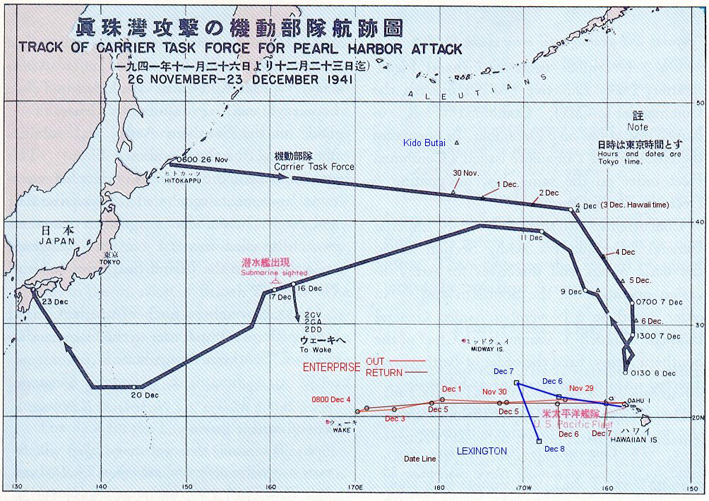
Alleged movements in the Pacific for the
Japanese task force in the attack on Pearl Harbor on
December 7, 1941. The starting point was the Kuriles (Nov. 26) and the
end point may have
been Yamaguchi (Dec 23). Source: Wikipedia.
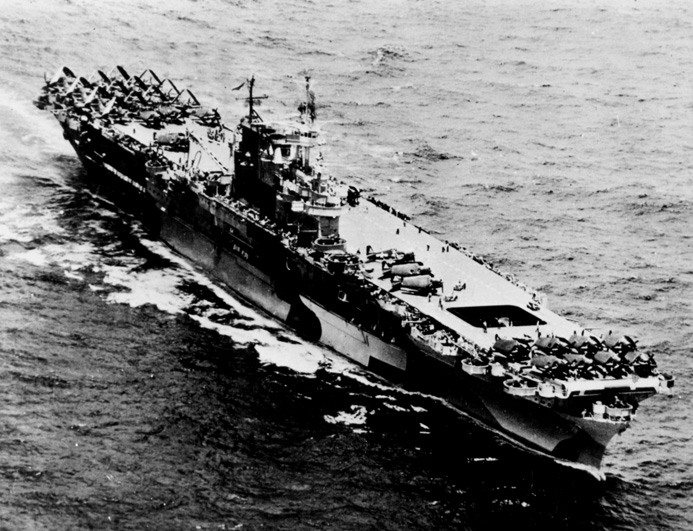
The aircraft carrier USS Enterprise photographed
in August 1944.
Source: Wikimedia Commons.
Preparations for a "Japanese" attack could begin after
the suspended talks on November 26. The three aircraft carriers
Enterprise, Lexington and Saratoga were ordered to take positions west
of Hawaii. They "happened" to be outside Pearl Harbor during the
"Japanese" attack. From these ships, American fighter
planes could approach Pearl Harbor undisturbed. The official reports state
that 353 Japanese planes attacked. My assessment is that 20 American
planes were enough to cause the relatively limited damage that occurred.
The ships that were bombed and sunk could easily be salvaged. The water
in the harbor is shallow.
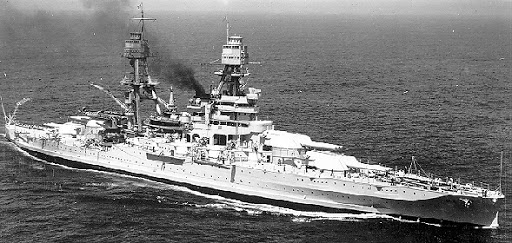
USS Arizona (AR - i - ZON - A).
The USS Arizona was a battleship built in 1914. It had
participated in World War I. It was fired with coal. The ship was out of
date and did not meet the requirements for a battleship in 1941. Arizona
was sunk by American bombers. The ship was not salvaged.
The infrastructure in the port suffered limited damage.
The building where the military was headquartered was not bombed.
It is estimated that 2,403 Americans were killed and
1,178 injured. My view is that these figures are exaggerated. It was a
holiday (Sunday) on Hawaii when the attack
occurred. Most of the ship's crews were on leave. Many have been killed
and injured in the attack. That is true.
President Roosevelt had been working hard all week. On
the morning of December 7, he had ordered that he would
not be disturbed. His phone was disconnected. He would
tinker with his stamp collection. At 1.45
pm the secretary of
the US Navy, Frank Knox, had been reached by the
information about the "Japanese" attack. He then managed to get in touch
with Roosevelt over the phone. He then said, "Mr. President, it looks
like the Japanese have attacked Pearl Harbor," to which the President
replied, "No!"
Husband E. Kimmel was commander of the
US
Pacific Fleet. He was on the scene on Hawaii when the
attack occurred. In the aftermath, he was held responsible for the
failure. He was dismissed as commander and degraded from 4-star admiral
to 2-star. Of course, Kimmel had participated in the planning of the
"Japanese" attack. He defended himself by saying that he only followed
orders from Washington. He has received support for this attitude from a
number of writers in the United States.
Kimmel was married to Dorothy Kinkaid.
They had three sons.
Manning Kimmel followed in his father's
footsteps and became a naval officer. He participated in World War II.
He was mainly placed for service on submarines. In 1944 he was commander
of the submarine USS Robalo. On July 26, they were outside the
Philippines. The submarine ran into a mine and sank. The details of
Kimmel's fate are unknown. However, he was presumed dead. He
became 31 years old.
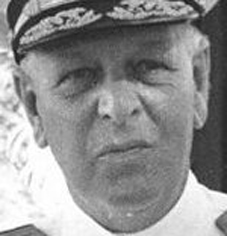


Husband E. Kimmel, .
Theodore Roosevelt Dorothy Kinkaid
(1882 - 1968)
(1858 - 1919)
(1890 - 1975)
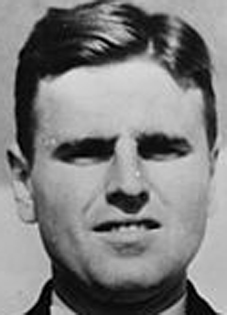

Manning Kimmel
Husband E. Kimmel
(1913
- 1944)
(1882
- 1968)
Walter Short, (1880 - 1949), was a
general in the US Army. He was responsible for the defence
of the military installations on Hawaii. He was
fired from his post after the attack. Like
Kimmel, he referred to the fact that he only followed the orders that
came from Washington. Short was degraded. He died
from a heart disease in 1949. He became 69 years
old.
After a long time of illness,
Franklin D. Roosevelt died on April 12, 1945. He became
63 years old.
Roosevelt was succeeded by Harry S. Truman.
Memorial:
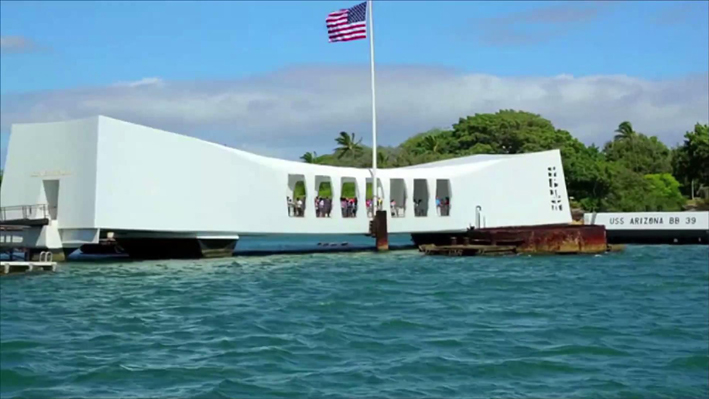
Museum at the wreckage of the USS Arizona. V-marked.
